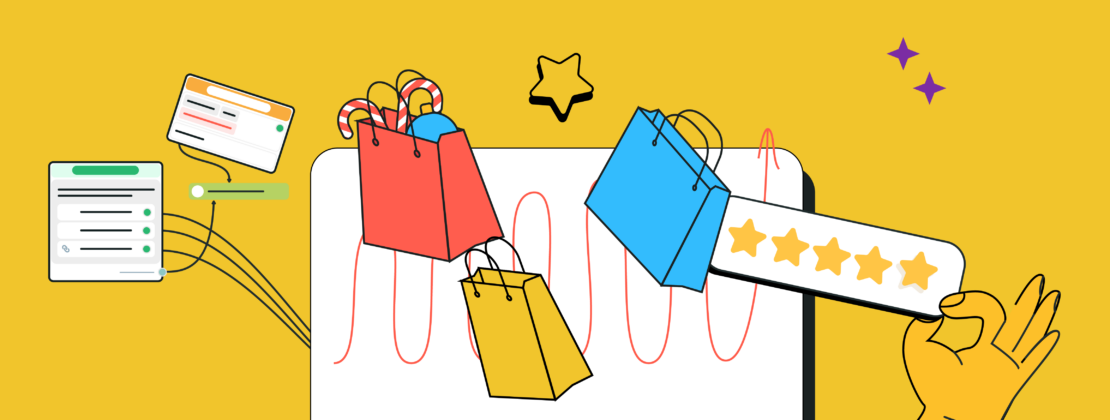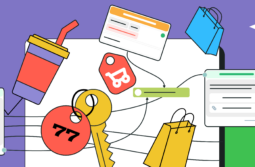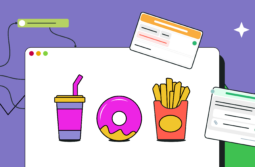During such a busy shopping season, your customer service team needs all the help it can get. That’s why chatbots can be a great addition to your marketing toolbox.
In this post, we’ll talk about the many use cases for chatbots in holiday marketing and the best strategies to make your chatbot implementation successful.
Content:
Use cases for chatbots during holidays
The National Retail Federation (NRF) expects to see record spending levels this holiday season. On average, consumers are budgeting nearly $900 for gifts and seasonal items like decorations, cards, food, and candy. That’s a lot of money when you imagine the number of people participating in the holiday shopping frenzy.
So, where do chatbots fit in all of this? These powerful AI tools have several use cases.
To help you get a good idea of how chatbots can truly transform the holiday shopping experience, let’s play out a few scenarios:
- Scenario #1. Your customer is having technical difficulties with the checkout process, and they’re worried that their order won’t be processed in time for the holidays. A chatbot can help customers troubleshoot common issues. It can also give the customer information about shipping timelines.
- Scenario #2. Your customer is unsure about the sizing or specifications of a particular product and needs assistance before making a purchase. A chatbot can ask the customer a series of predetermined questions to help understand the customer’s specific requirements. Based on their responses, the chatbot can provide accurate information about product details, sizing charts, and any customization options available.
- Scenario #3. Your customer wants to check on the delivery status of their holiday gifts and can’t find the relevant information on the retailer’s website. A chatbot can access real-time delivery information and update the customer on their order status, estimated delivery times, and tracking details.
- Scenario #4. Your customer is concerned about the return policy for holiday purchases and wants to make sure they have plenty of time to return a product if they don’t want it. A chatbot can provide detailed information about the return policy, including eligibility criteria, timelines, and steps to initiate a return.
Forever 21’s chatbot allows holiday shoppers to track their orders easily. All they need to do is choose “Track Order” from the menu and provide the email address associated with their account.
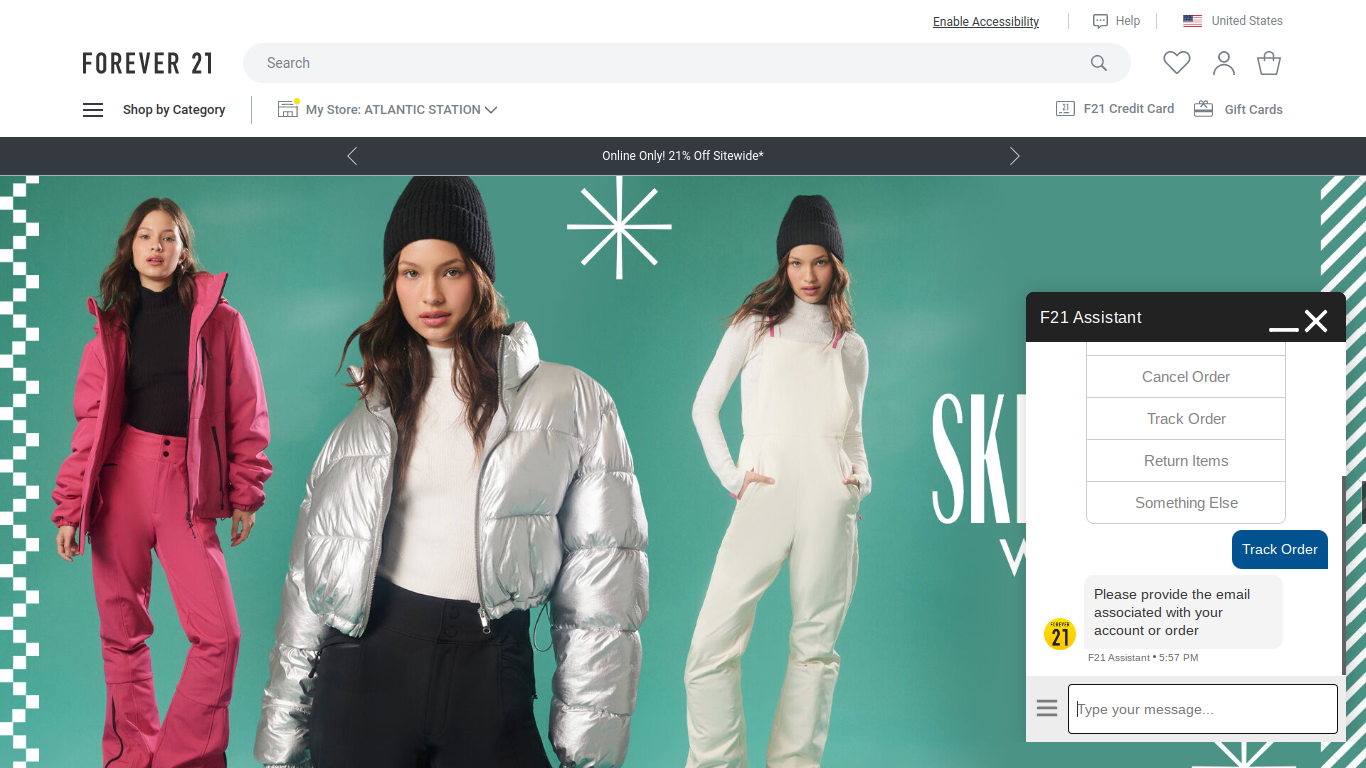
So, it turns out that chatbots can be pretty valuable when it comes to answering questions and addressing customer concerns. But that’s not their only superpower — they can do much more. For example, by partnering with a CDP (Customer Data Platform), you can collect all your customer information in one spot to create a complete picture of your customers and use that information to boost your holiday marketing.
You can also use chatbots for the following marketing activities:
- send promotions;
- increase the performance of paid ad campaigns;
- increase conversion rates;
- reduce cart abandonment;
- capture newsletter subscribers;
- personalize the buying experience;
- cross-sell and up-sell;
- re-engage inactive and engage existing customers.
Five strategies for using chatbots in holiday marketing
Chatbots can play a key role in automating holiday promotions. You can use them to execute marketing campaigns, send targeted messages, and deliver promotional content to customers based on their preferences and behavior. Let’s explore some strategies in detail.
Choose the right type of chatbot
Before implementing chatbots in holiday marketing, set goals. What do you want to achieve with your chatbot? Answering this question will help you determine the chatbot type for your holiday marketing campaign.
The different types of chatbots include but are not limited to:
- Menu- or button-based chatbots. These are chatbots in their simplest form. They provide a list of pre-determined choices. Users can select the one that fits their needs the most, and the chatbot will narrow down the options until users reach the answer they’re looking for.
- Keyword recognition-based chatbots. This is a more advanced tool. A user can type in a specific keyword, and the chatbot will analyze it and try to find an answer using its knowledge base.
- AI chatbots. These are more complicated ones, programmed with Natural Language Processing and Machine Learning. They require training and usually remember conversations with specific users to self-learn from them over time.
- Conversational chatbots. These chatbots understand natural human language, allowing them to decipher the meaning behind user queries. When it comes to accuracy, conversational chatbots are hard to beat.
- SMS chatbots. You can use SMS chatbots to engage with your customers via text, sending them promotions, special offers, and discounts after they’ve made a purchase. You can also set up keyword triggers and prompts that allow customers to perform key actions like rating a product, asking about order status, requesting product information, or unsubscribing from SMS communications.
- Direct message chatbots. Like SMS chatbots, direct messaging chatbots don’t typically live on your website. Instead, they’re available on social media platforms like Facebook or Instagram and chat apps like WhatsApp or Telegram.
Let’s see some examples of different types of chatbots in action. Best Buy uses a button-based chatbot to guide customers through the checkout process.
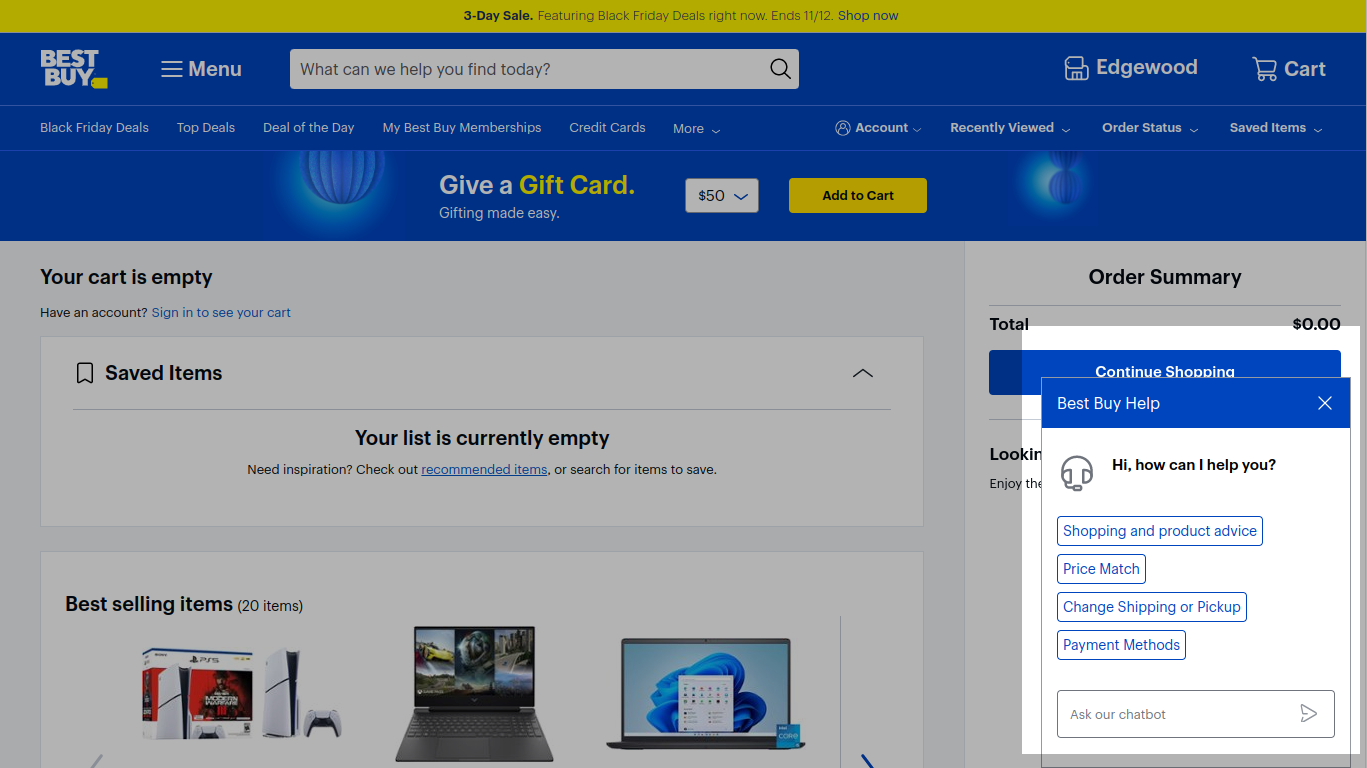
Gong engages website visitors with a hook to draw the site visitor in. Once engaged, the bot asks the site visitor a few follow-up questions to see why they are on the site and how the bot can best guide them in the right direction.
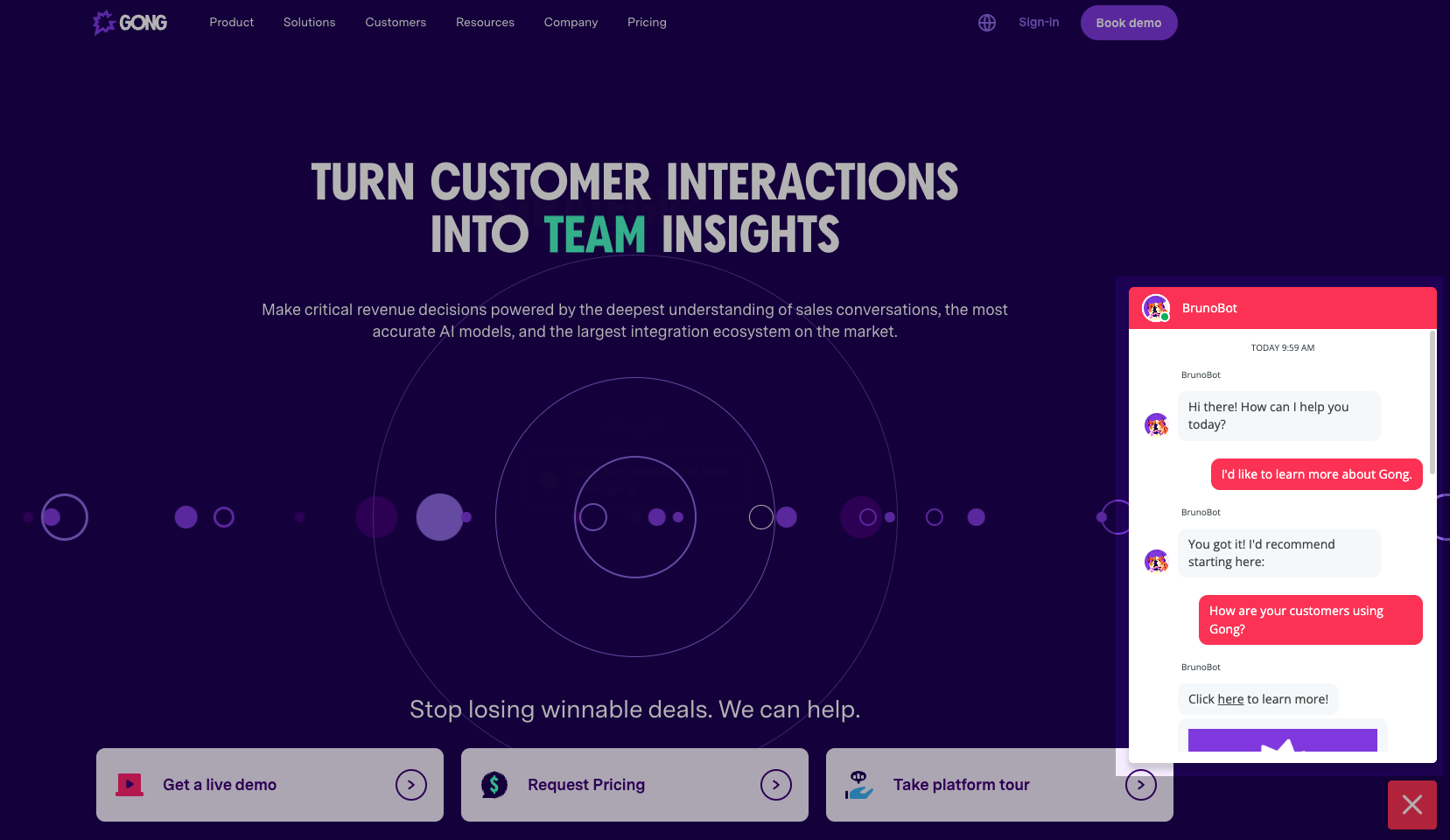
Some brands use Facebook Messenger chatbots to automatically answer questions about their product or service. Take StudioSuits, for example. They leverage Facebook bots to answer questions about custom men’s suits. A quick response can make or break the sale.
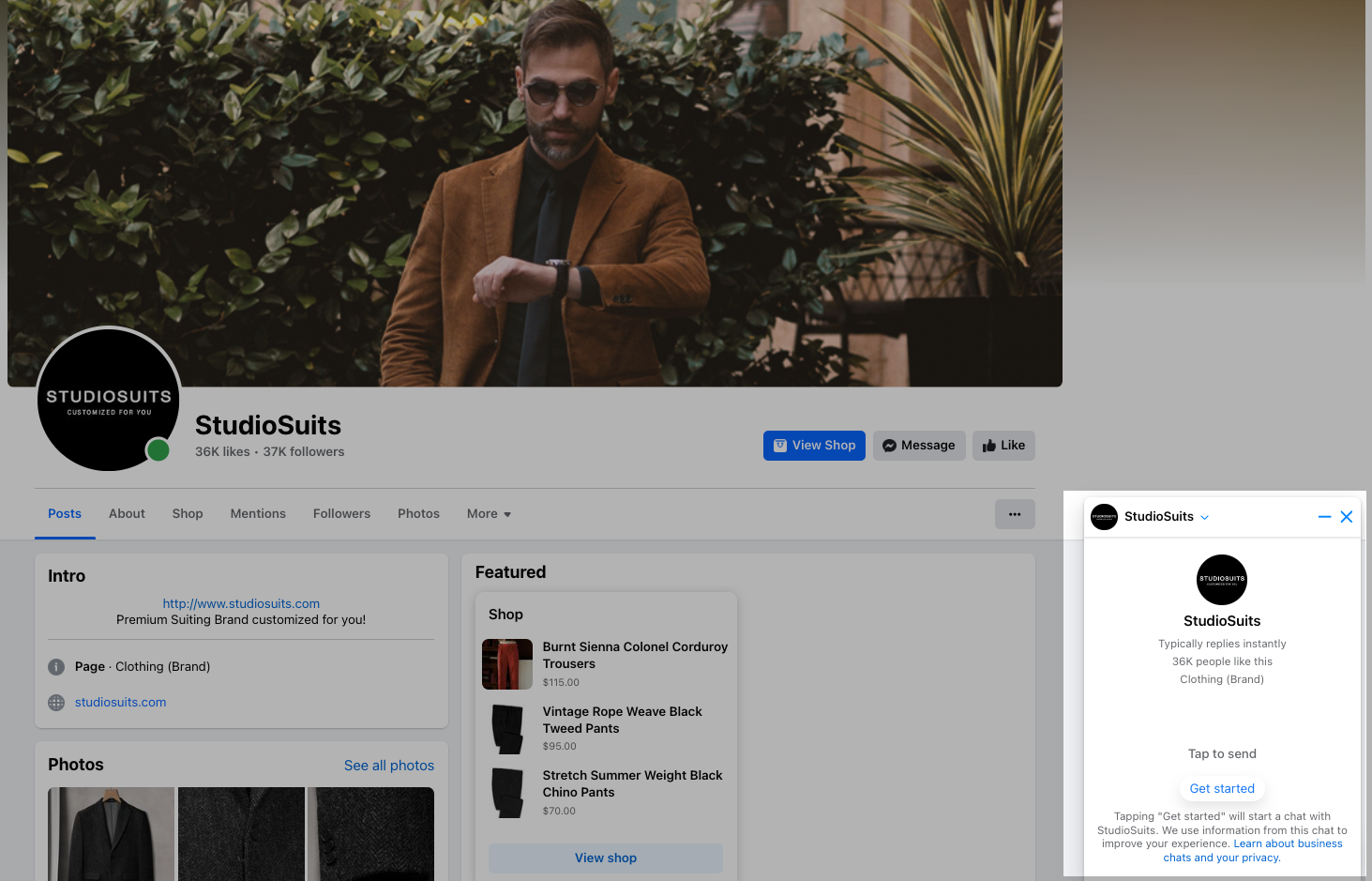
Customize your chatbot
After deciding on what type of chatbot to use, customize its message flows. This step helps your chatbot provide the most effective responses and enhances customer experience.
For example, when a customer lands on your website, they don’t always know exactly what they’re going to buy. You can use your chatbot to make specific recommendations based on their preferences. So, depending on your industry, customize your chatbot to ask certain questions about a customer’s preferences and interests.
The chatbot can then make product recommendations based on the customer’s responses.
For example, if you’re a sunglasses company, you can program your chatbot to ask customers what type of frame material or shape they like. Once they answer, the chatbot can show them where to find the product that best meets their needs.
You can also customize your chatbot to provide responses specific to the holidays. These responses might include:
- festive greetings;
- holiday-themed visuals;
- holiday FAQs;
- gift-wrapping and shipping options;
- seasonal out-of-office messages;
- countdowns and reminders.
Recommend gifts
Shoppers often struggle to find the right gifts for their loved ones. They look online to get inspiration and ideas. You can help solve this problem by programming your chatbot to recommend the perfect gifts.
To ensure your chatbot provides only the most personalized responses, you can program it to ask questions like: “Who are you shopping for?” “What are their interests?” or “What is your budget?”
Based on the answers, your chatbot can curate a list of relevant product recommendations.
Send promotions
Studies show that 50% of consumers agree that price is the top influence on holiday purchase decisions, while discounts came in second (22% of consumers agreed). These numbers show how important holiday shoppers value savings. They’re likely buying gifts for multiple people. So, the more they can save, the better.
Once your chatbot is up and running, you can use it to send holiday promotions to cut through the noise of the year’s busiest shopping season.
You can also use your chatbot to send information that builds a sense of urgency, such as the last date for free shipping with guaranteed delivery by Christmas. Or, you could offer last-minute gift ideas that don’t require shipping, like online gift cards.
Reduce cart abandonment
Even though people tend to shop a lot during the holiday season, many of them abandon their online carts. Cart abandonment happens for a variety of reasons:
- the product is too expensive;
- the product won’t arrive in time for Christmas;
- the retailer’s website is too difficult to navigate;
- there aren’t enough payment options;
- they don’t want to go through the hassle of creating an account.
Implementing a chatbot on your website, aka live chat, can solve many of these issues. You can use it to trigger a targeted message offering help or even a discount on pages where customers experience friction.
For example, when customers get to the checkout page, your chatbot could show a special promotion that offers free shipping or reassure customers that if they order right away, the product will arrive in time for the holidays.
Or, if the customer is spending a lot of time on the page where they have to create an account, it can let customers know there’s a guest checkout option available.
Setting up these types of triggers can be the difference between a sale and an abandoned cart.
Kitchen Aid uses a virtual assistant chatbot to help customers experience a seamless, frictionless checkout. Customers can just type in their questions or concerns and get a response tailored to their unique requests.

Proving a seamless holiday shopping experience
Friction is one of the biggest sales deterrents there is. When customers experience it during the buyer’s journey, they’re likely to move on to the next business.
This is especially true during the holidays, when customers are already dealing with the stress of finding the right gifts, trying to save money, and struggling to get everything they need in time for the holidays.
Chatbots can reduce some of this friction. Implement some of our holiday chatbot best practices, adjust your strategy based on customer experiences, and always strive to improve.
Build your first chatbot with SendPulse to get it up and running this holiday season and beyond!
